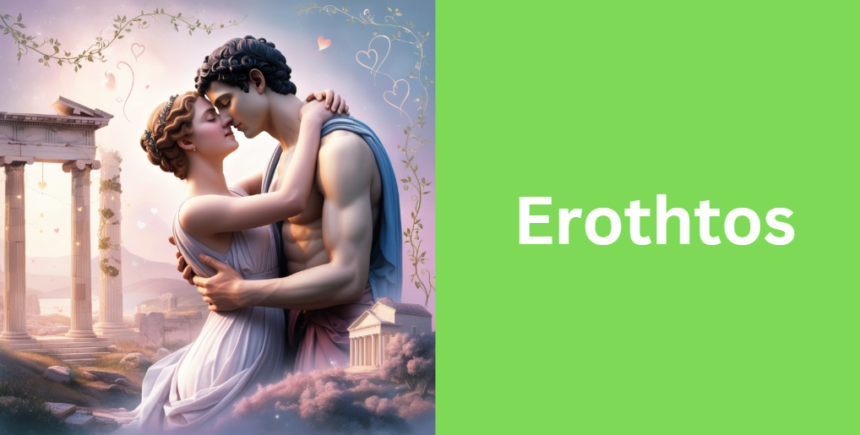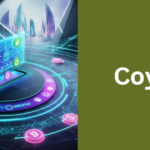In this guide, we explore the multifaceted concept of Erothtos. This ancient and profound term has evolved through centuries, influencing art, philosophy, and personal relationships.
Our journey covers its origins, historical evolution, cultural impact, and even modern-day practical applications. By the end of this guide, you will have a deep understanding of Erothtos and how it resonates in various aspects of life.
Defining Erothtos: Origins and Conceptual Framework
Understanding Erothtos begins with its definition and the conceptual framework that underpins its rich legacy. The term not only encompasses physical attraction but also embraces a profound emotional and intellectual connection.
Etymology and Linguistic Roots
The word Erothtos draws its lineage from ancient languages, primarily Greek, where early notions of love and desire were articulated in words like eros. Over time, the term evolved to capture a broader spectrum of human emotion—combining passion, longing, and a deeper yearning for connection. This linguistic evolution highlights how cultures have continually redefined the meaning of love to incorporate both the physical and the spiritual.
Philosophical Underpinnings
From Plato to Aristotle, great minds have debated the nature of love and desire, laying the groundwork for the modern interpretation of Erothtos. Ancient philosophers viewed love not just as an emotion but as a critical element that balanced reason with passion. Their insights continue to influence contemporary thought, where Erothtos is seen as a bridge between rationality and emotion, uniting the intellectual with the instinctive.
Emotional and Psychological Dimensions
Modern psychology has taken cues from these early philosophies, examining how Erothtos impacts human behavior and relationships. It is not merely about attraction; it also involves emotional intelligence, personal growth, and even self-expression. Researchers suggest that a balanced approach to Erothtos can foster healthier relationships and contribute significantly to personal well-being.
Historical Evolution of Erothtos
The concept of Erothtos has evolved dramatically over time. Its journey from ancient civilizations to modern society is a testament to its enduring appeal and adaptability.
Ancient Civilizations and Early Concepts
In ancient Greece and Rome, Erothtos was intertwined with mythology and philosophy. Early texts and artworks celebrated the union of passion and intellect, symbolizing how love was both a divine gift and a human pursuit. This period laid the foundational narratives that continue to influence the interpretation of Erothtos today.
Renaissance and the Rebirth of Passion
The Renaissance marked a significant turning point in the evolution of Erothtos. This era saw a revival of classical ideals, where art and literature became mediums for exploring human emotions in unprecedented depth.
Artists and writers of the time reimagined Erothtos as a dynamic interplay between beauty, intellect, and emotion. For instance, the works of Leonardo da Vinci and Michelangelo vividly encapsulated the essence of human passion, paving the way for modern interpretations.
Romanticism and the Modern Era
Romanticism further transformed Erothtos, infusing it with an emphasis on individualism and emotional intensity. As society moved into the modern era, Erothtos became a critical lens through which people viewed relationships and self-expression. The modern perspective on Erothtos integrates historical insights with contemporary challenges, from digital communication to evolving social norms.
Below is a simple table summarizing the timeline of Erothtos:
| Era | Key Characteristics | Influential Figures/Works |
|---|---|---|
| Ancient Greece | Mythology, philosophy, divine inspiration | Plato, Aristotle, classical myths |
| Renaissance | Revival of classical ideals, artistic exploration | Leonardo da Vinci, Michelangelo |
| Romanticism | Emphasis on individualism and deep emotion | Lord Byron, Mary Shelley |
| Modern Era | Integration of history with modern communication challenges | Contemporary artists and digital media trends |
The Cultural Impact of Erothtos in Art, Literature, and Culture
The influence of Erothtos extends far beyond academic debate—it has inspired some of the most celebrated works of art, literature, and music.
Visual Arts: Paintings, Sculpture, and Symbolism
Throughout history, artists have used visual mediums to express the layered emotions encompassed by Erothtos. Iconic paintings and sculptures often depict not only the physical aspects of love but also the internal, emotional landscapes.
These works use symbolism, color, and form to convey a message that goes beyond words. For example, classical sculptures that capture the tender embrace of lovers are not just about physical beauty but also about the emotional depth that Erothtos represents.
Literary Expressions and Poetry
Literature, especially poetry, has been a powerful vehicle for expressing Erothtos. From the sonnets of Shakespeare to the modern verses of contemporary poets, the written word has long been used to explore the spectrum of human desire. In this context, Erothtos emerges as both a muse and a subject, inspiring writers to articulate the inexpressible qualities of love, longing, and passion.
Music, Film, and Digital Media
In today’s digital age, the concept of Erothtos has found new expression in music, film, and digital storytelling. Movies and songs that delve into themes of love and emotional connection often draw on the ancient roots of Erothtos to create narratives that resonate with audiences worldwide. Modern media has the unique ability to blend visual and auditory experiences, thereby offering a multi-dimensional interpretation of Erothtos.
Philosophical and Psychological Perspectives on Erothtos
The discourse on Erothtos is enriched by various philosophical and psychological perspectives that challenge and deepen our understanding.
Comparative Analysis: Erothtos vs. Related Constructs
While Erothtos shares similarities with terms like eros and agape, it is distinct in its comprehensive approach to love. Whereas eros might emphasize physical attraction, Erothtos encapsulates both the emotional and intellectual dimensions of desire. This comparative analysis helps highlight the uniqueness of Erothtos and its relevance in modern discourse.
Psychological Theories on Desire and Connection
Modern psychology explores Erothtos through the lens of emotional intelligence and interpersonal connection. Studies indicate that the balanced expression of Erothtos can lead to improved mental health and more fulfilling relationships. Researchers have identified several key factors—such as empathy, vulnerability, and mutual respect—that are essential for fostering a genuine experience of Erothtos.
Interdisciplinary Insights
The study of Erothtos benefits immensely from an interdisciplinary approach. Insights from philosophy, psychology, art, and even neuroscience converge to offer a holistic understanding of this concept. This multifaceted exploration underscores the idea that Erothtos is not merely an abstract notion but a dynamic force that shapes human experience in diverse ways.
Global Interpretations and Cultural Impact of Erothtos
The influence of Erothtos is not confined to any single culture or era. Instead, it is a universal concept that transcends geographical and cultural boundaries.
Eastern vs. Western Perspectives
Different cultural traditions offer unique interpretations of Erothtos. In Western traditions, the concept is often tied to the classical ideals of beauty and intellectual love, while Eastern philosophies may emphasize balance, harmony, and inner spirituality. These diverse perspectives enrich our understanding by illustrating how Erothtos adapts to and reflects cultural values.
Modern Relationships and Social Media Influence
In today’s fast-paced digital world, Erothtos plays a crucial role in shaping modern relationships. Social media platforms have created new avenues for expressing and experiencing love, making the ancient concept of Erothtos more accessible yet more complex. The digital age has introduced challenges such as superficial connections, but it has also enabled deeper, more meaningful engagements for those who choose to pursue them.
Future Trends and Emerging Perspectives
Looking ahead, the future of Erothtos appears to be dynamic and ever-evolving. As globalization and technological advancements continue to reshape human interaction, the ways in which we express and experience Erothtos are likely to change. Emerging trends suggest that a renewed emphasis on emotional intelligence and authentic connection will drive the evolution of Erothtos in the coming decades.
Practical Applications of Erothtos
Beyond its theoretical and historical significance, Erothtos offers practical benefits in everyday life. Embracing its principles can lead to enhanced personal growth and enriched relationships.
Personal Growth and Self-Expression
On a personal level, understanding Erothtos can be a transformative journey. By tapping into this deep well of emotion and intellect, individuals can foster greater self-awareness and creativity. Techniques such as journaling, mindfulness, and artistic expression are powerful tools for exploring Erothtos within oneself. Many people find that embracing this concept encourages a more balanced and fulfilled life.
Artistic and Therapeutic Uses
Erothtos has also proven to be a valuable resource in the realm of art therapy. Creative practices that incorporate themes of love, passion, and self-discovery are known to provide emotional healing. Whether through painting, music, or dance, the expression of Erothtos can serve as a therapeutic outlet, helping individuals to process and articulate their emotions.
Enhancing Relationships and Community Building
On a broader scale, the principles of Erothtos can be applied to improve interpersonal relationships and strengthen communities. In professional settings, fostering an environment that values emotional intelligence and mutual respect can lead to better teamwork and collaboration. Likewise, in personal relationships, openly expressing the ideals of Erothtos often results in deeper, more authentic connections.
Criticisms, Misinterpretations, and Controversies Surrounding Erothtos
Like any profound concept, Erothtos has faced its share of criticisms and misinterpretations. Critics argue that the commercialization of love in modern media sometimes dilutes the authentic meaning of Erothtos. In academic circles, debates continue about the extent to which ancient philosophical ideas are applicable in contemporary society.
Academic Debates and Cultural Criticism
Scholars have long debated whether Erothtos should be confined to its historical context or reinterpreted for modern application. Some contend that too much emphasis on its historical aspects may limit its relevance, while others believe that the depth of its origins provides a solid foundation for modern reinterpretation.
Commercialization vs. Authenticity
In today’s consumer-driven culture, there is a risk that Erothtos may be oversimplified or misrepresented for commercial gain. Advertisements and media representations often focus on the superficial aspects of love and desire, overshadowing the deeper emotional and intellectual components that truly define Erothtos.
Ethical Considerations
The exploration of Erothtos also invites important ethical discussions. When applied in therapeutic or artistic contexts, it is crucial to navigate issues of consent, respect, and cultural sensitivity. By maintaining an ethical framework, practitioners can ensure that the exploration of Erothtos remains a respectful and enriching experience for all involved.
Resources and Further Reading on Erothtos
For those interested in delving even deeper into the world of Erothtos, a variety of resources are available to broaden your understanding.
Books and Academic Journals
A wealth of literature explores the themes of Erothtos from multiple perspectives. From classical texts by ancient philosophers to modern academic journals, these sources offer diverse insights into the concept. A well-curated reading list can provide both historical context and contemporary analysis.
Interviews and Expert Opinions
Interviews with philosophers, psychologists, and artists provide firsthand perspectives on how Erothtos is understood and applied today. These expert opinions help bridge the gap between theoretical discussion and practical application, offering real-world examples of Erothtos in action.
Online Communities and Multimedia Resources
Digital platforms such as forums, podcasts, and video essays are increasingly popular for exploring complex topics like Erothtos. These multimedia resources allow for interactive discussions and provide a community space for those passionate about this subject.
Conclusion
In summary, Erothtos is a timeless and multifaceted concept that transcends simple definitions of love and desire. From its ancient origins and philosophical roots to its modern applications in art, psychology, and relationships, Erothtos remains a dynamic force in shaping human experience.
By exploring its rich history, cultural impact, and practical benefits, we gain not only a deeper understanding of love but also valuable insights into enhancing our own lives. Embrace the journey of Erothtos and discover how this profound concept can lead to personal growth, richer relationships, and a more meaningful connection with the world around you.
FAQs
What are the emerging research trends in Erothtos?
Recent studies are exploring Erothtos through innovative interdisciplinary lenses. Researchers are increasingly combining neuroscience with art and literature to understand the neurological basis of deep emotional connections.
Emerging trends also include examining the impact of digital media on emotional expression, as well as studying how immersive technologies, like virtual reality, can simulate or enhance experiences related to Erothtos. These avenues open up exciting possibilities for understanding how our brains process and experience profound emotional states.
How might Erothtos influence leadership and workplace dynamics?
Although traditionally associated with love and passion, the principles of Erothtos can also enrich leadership and organizational behavior. Leaders who embrace the core values of emotional intelligence—such as empathy, authentic communication, and creative expression—are better equipped to foster collaboration and innovation.
By applying these principles, organizations can create environments where interpersonal connections are valued, leading to improved team morale and more dynamic problem-solving approaches.
What role does digital technology play in shaping new interpretations of Erothtos?
Digital technology has significantly transformed how we experience and express Erothtos. Beyond social media’s role in connecting people, there are virtual art exhibitions, digital poetry slams, and interactive platforms that invite users to share and interpret personal stories of passion and connection. These digital mediums not only democratize creative expression but also allow for a broader, more inclusive understanding of Erothtos that transcends traditional cultural boundaries.
Are there any modern cultural rituals or practices that embody Erothtos?
Yes, several emerging cultural practices reflect the spirit of Erothtos. For instance, online storytelling events, digital art collaborations, and community-based creative workshops are becoming popular ways to celebrate emotional depth and creative expression.
These modern rituals encourage participants to explore and share their inner experiences in a collective setting, thus reinforcing the timeless nature of Erothtos in new and innovative formats.
How can someone further explore and deepen their understanding of Erothtos beyond reading articles?
To deepen your exploration of Erothtos, consider engaging in experiential and interactive learning methods. Participating in immersive workshops, creative therapy sessions, or art retreats can provide firsthand experiences of the emotional and intellectual dimensions of Erothtos.
Additionally, enrolling in courses on philosophy, psychology, or art can offer structured insights, while joining dedicated online communities allows for continuous dialogue and exchange of ideas with like-minded individuals.
Other Posts Like Erothtos
Starbucks Gift Card Balance: How to Check, Reload & Use Your Card Efficiently
Ultimate Guide to sfm compile: In-Depth and Comprehensive Tutorial
What PSI Radiator Cap for NSDD JD430 Yanmar Diesel: A Comprehensive Guide











